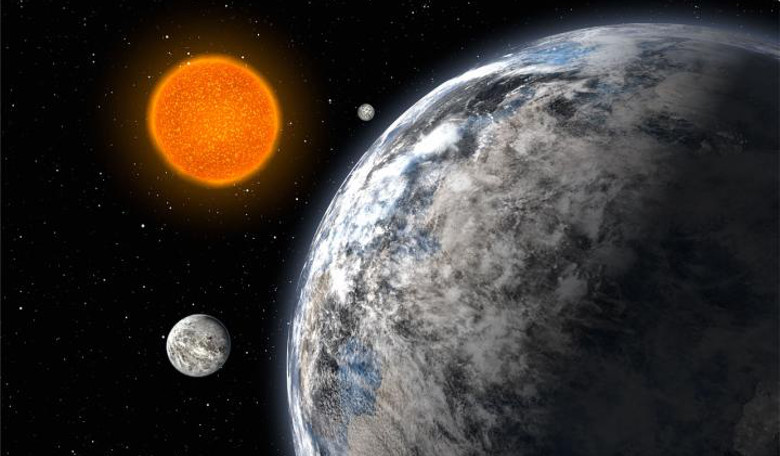A new analysis of a star known as GJ 9827 that resides about 100 light years away in the Pisces constellation, shows that the star hosts a trio of planets that are all slightly larger than Earth, one of which could be the most massive and dense super-Earth exoworld detected to date.
In order to try and understand what an exoplanet is made of, researchers need to measure both its radius and its mass, which allows them to determine its bulk density. And for the number of exoplanets that these measurements have been made for so far, astronomers have noticed that planets with a radii greater than about 1.7 times that of Earth have gassy envelopes, like Neptune, while those with radii smaller than this are rocky, like our home planet.
It has been suggested that this difference is the result of a process known as photoevaporation. This occurs when so-called volatiles – substances like water and carbon dioxide – are stripped from a planet’s envelope, thus creating worlds that have a smaller radii. But more information is needed to truly test this theory.
Luckily, the three planets surrounding GJ 9827 could help assess whether this theory holds any merit or not, as their radii span this dividing line between super-Earth (rocky) and sub-Neptune (somewhat gassy) planets; planet b has a radii of 1.64, planet c is 1.29 and planet d is 2.08.
Using their Planet Finding Spectrograph (PFS) to monitor GJ 9827, the team which is headed by Johanna Teske from the Carnegie Institution for Science have found that planet b is roughly eight times the mass of Earth and is made up of roughly 50 percent iron. The masses for planet c and planet d are estimated to be about two and a half and four times that of Earth respectively, although the uncertainty in these two determinations is very high.
Planet d on the other hand is suspected to have a significant volatile envelope, which leaves open the question of whether planet c has a volatile envelope or not.
"More observations are needed to pin down the compositions of these three planets," said Sharon Wang, a co-author on the recent research paper detailing these results. "But they do seem like some of the best candidates to test our ideas about how super-Earths form and evolve, potentially using NASA's upcoming James Webb Space Telescope."
New data was also released this week on the seven planets orbiting the nearby ultra-cool dwarf star TRAPPIST-1. A new study that has looked at the planets densities, suggest that some of them could have up to 5 percent of their mass in the form of water — about 250 times more than Earth's oceans.
When combined with models of the planets’ compositions, the measurements of the densities help strengthen the case that the seven TRAPPIST-1 planets are not barren rocky worlds, but some could contain up to 5% of the planet's mass in volatile material - most likely water. This is a huge amount as by comparison, the Earth has only about 0.02% water by mass!
In terms of the amount of radiation it receives from its star and its size and density, the fourth planet out from its host star is the most similar to Earth. It also seems to be the rockiest planet of the seven, and has the potential to host liquid water.
"Densities, while important clues to the planets' compositions, do not say anything about habitability. However, our study is an important step forward as we continue to explore whether these planets could support life," said Brice-Olivier Demory, from the University of Bern and a co-author of the latest TRAPPIST-1 study.











